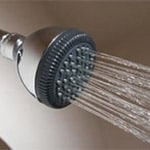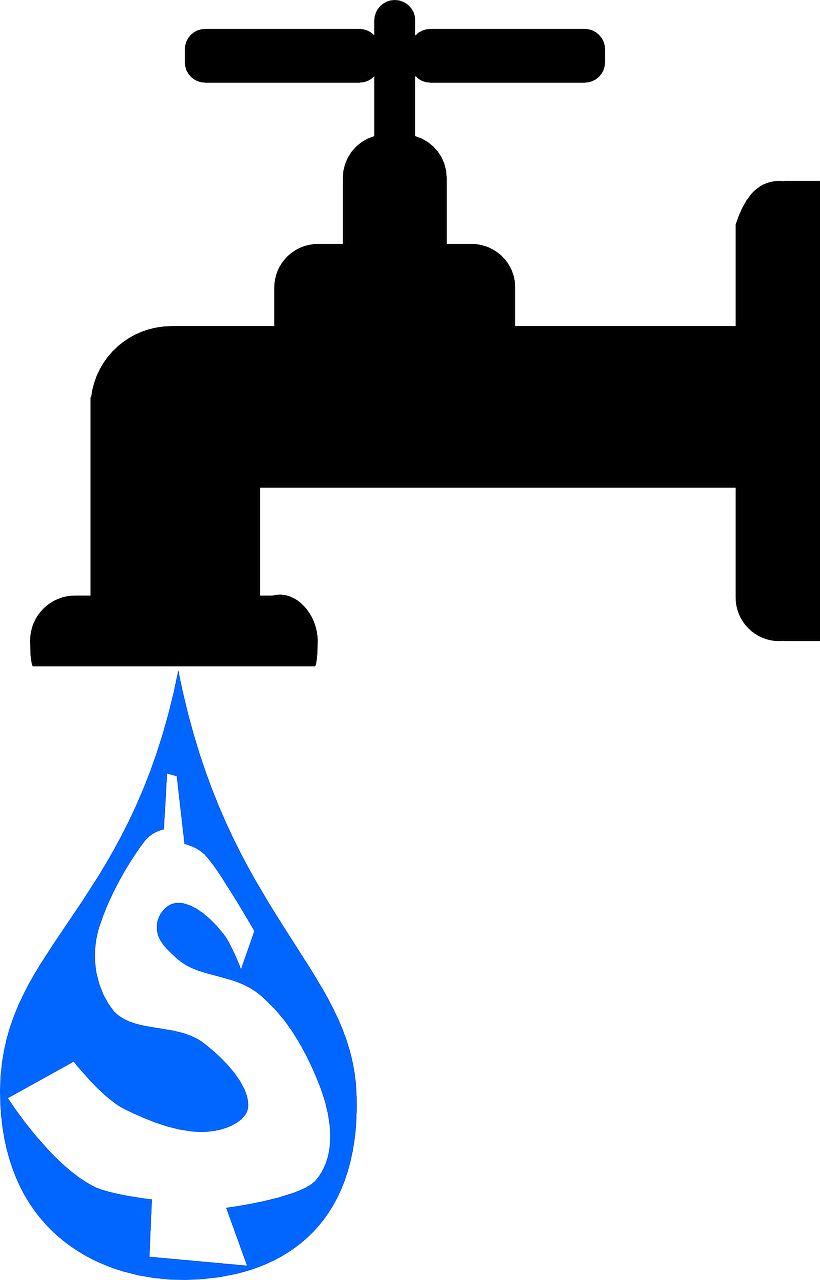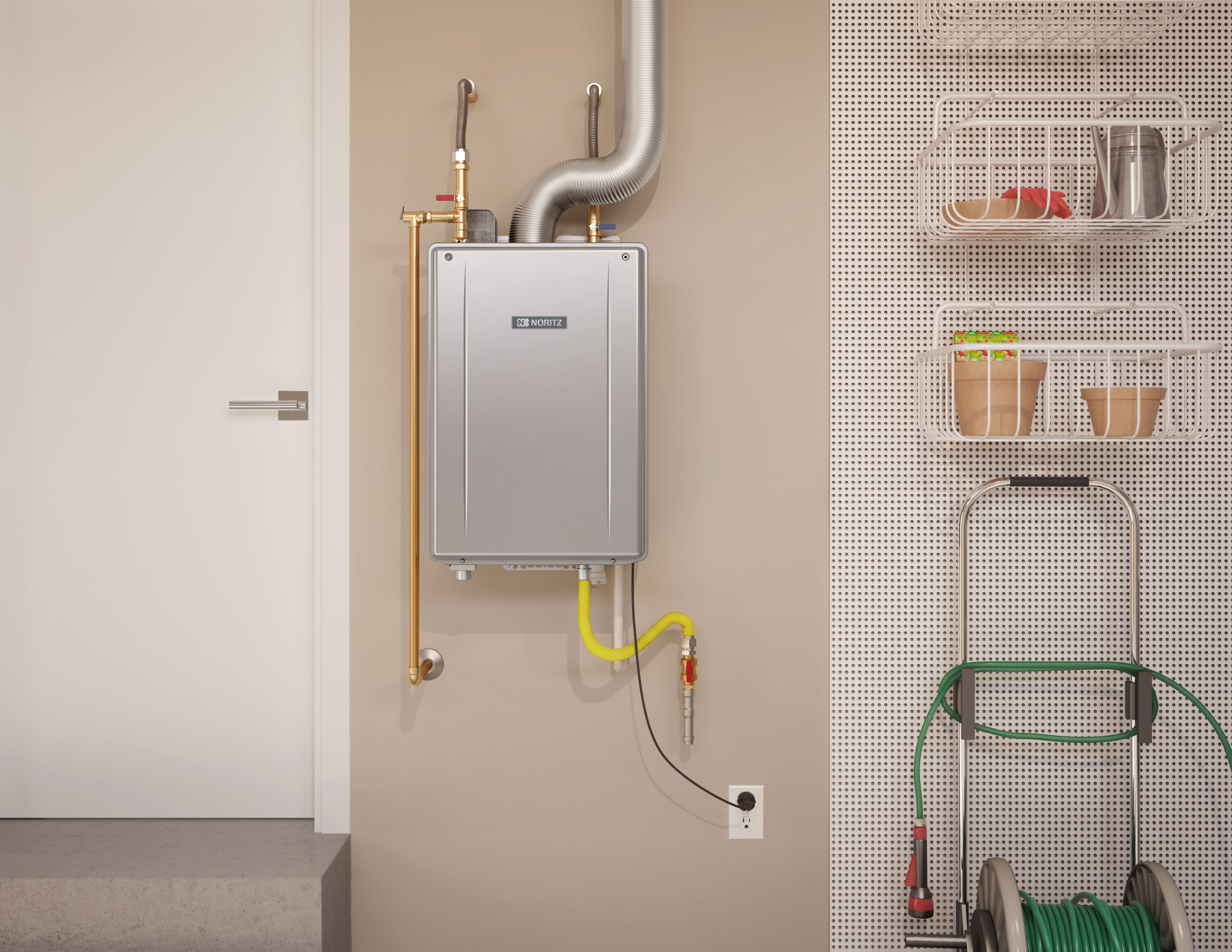
Tankless Water Heater Buying Guide
 Imagine an unlimited supply of hot water. That's the tankless promise.
Imagine an unlimited supply of hot water. That's the tankless promise.
Most of us don't give much thought about water heaters until they break and we're left shivering in a cold shower. When we do think of them, a giant tank probably comes to mind before anything else, but that is changing.
More Americans are turning to tankless water heaters as an alternative to traditional storage tank models, something the rest of the world has been doing for decades.
For many, tankless water heaters offer a compact, more efficient alternative to their traditional rivals, although there is a slight learning curve to their operation and the many benefits they provide. Our tankless water heater buyer's guide will bring you up to speed on this exciting technology.
What is a Tankless Water Heater?
As its name suggests, a tankless water heater does not store hot water. Instead, it monitors the flow of water through the water heater to determine when hot water is needed.
In a gas-powered unit, the flow is detected with a sensor, the burner is turned on and water is heated as it passes through the unit. Electric units utilize either one or multiple heating elements to heat the water.
Tankless water heaters are sometimes called on-demand water heaters because when activated, they are capable of providing unlimited hot water as long as they were properly sized.
What are the Benefits of Tankless Water Heaters?
The primary benefits of tankless water heaters come from the enhanced comfort they provide, efficient operation, space savings, and long lifespan. Let's take a closer look at each benefit.
Hot Water Comfort
 For many homeowners, especially those with large families, hot water can be a luxury if they have a smaller storage tank water heater.
For many homeowners, especially those with large families, hot water can be a luxury if they have a smaller storage tank water heater.
In a household of six people, for example, by the time the last person enters the shower, the water will probably be lukewarm at best. That's because a storage tank water heater is limited by the number of gallons of hot water it can replace and store in one hour.
In contrast, tankless water heaters, when properly sized, will provide as much hot water as needed for as long as needed. For that family of six, the last person in the shower will be as comfortable as the first.
Water Heater Efficiency
 Water heaters are rated according to their Uniform Energy Factor (UEF). The UEF is the ratio of energy used by the water heater that is actually turned into hot water for use in the home.
Water heaters are rated according to their Uniform Energy Factor (UEF). The UEF is the ratio of energy used by the water heater that is actually turned into hot water for use in the home.
Typical large storage tank type water heaters have a UEF between 0.6 and 0.7, while tankless water heaters can go as high as 0.98. This means 98% of your energy goes toward its intended purpose--heating the water.
Storage tank water heaters waste even more energy by continuously heating water throughout the day, regardless if it's used it or not, costing you in energy.
Tankless water heaters avoid this problem. By operating only on demand, they don't use energy when no one is home. Furthermore, the highest-efficiency condensing tankless models have a secondary heat exchanger that captures heat from the flue gases to preheat incoming cold water.
This efficient operation can save homeowners money on their monthly energy bills and qualify them for state and utility rebates across the country.
Space Savings
 Rather than keep a large 40-80 gallon storage tank water heater in the basement, garage, or utility closet, homeowners can save space with a compact tankless water heater.
Rather than keep a large 40-80 gallon storage tank water heater in the basement, garage, or utility closet, homeowners can save space with a compact tankless water heater.
In many instances, tankless water heaters might be one-third the size of their storage tank counterparts. They are also often wall-hung and thus take up zero floor space.
As result, they are easier to access, clean and replace when necessary, giving the homeowner more space for storage or laundry.
Long Lifespan
All water heaters need to be maintained to maximize their lifespans. In areas that use well water, tankless water heaters should be flushed once per year or more due to a higher buildup of scale deposits.
Always refer to the owner's manual for manufacturer specs, recommended intervals, and steps. In areas with municipal water, flushing every two years should suffice. If using water softeners, maintenance is even easier, with fewer flushings needed.
All said and done, a tankless water heater should last 20 years or more when properly maintained. Furthermore, most units are built with modular components that can be individually replaced when needed, saving the expense of replacing and installing the whole thing. In contrast, a well-maintained storage tank water heater will last about 10 and must be replaced in its entirety.
Installing a Tankless Water Heater
Installing a tankless water heater has certain requirements that differ from those of traditional storage tanks. When converting from a storage tank to tankless, there will be additional installation steps and costs under most circumstances.
Plumbing
Unlike storage tank water heaters, which have their hot and cold water connections located at the top, tankless water heaters typically have them bottom-mounted.
Switching from a tank to tankless, then, requires the added material costs of extra pipe and the labor to run it down the unit. Note that certain manufacturers now offer tankless water heaters with top-mount connections, which make direct replacements quicker and less costly.
Venting
 Certain condensing tankless models are built to allow venting through the existing B-vent used with the storage tank water heater. This saves time on both material and labor.
Certain condensing tankless models are built to allow venting through the existing B-vent used with the storage tank water heater. This saves time on both material and labor.
In cases where this is not possible, venting can be accomplished with PVC, CPVC or polypropylene pipe if the model is condensing. For non-condensing models, stainless steel pipe will be necessary to withstand the high exhaust temperatures.
Chimney, direct and power venting are all possible configurations for tankless water heaters.
Gas Requirements
Since tankless units need to heat water very quickly, they need a more powerful burner and typically a larger, 3/4-inch gas line. Certain models still allow a 1/2-inch gas line, although it's important to verify this with a professional contractor.
Sizing
Sizing a tankless water heater is the most important part of the installation process. An improperly-sized unit simply won't perform the way you need it to. Fortunately, we have a free tankless sizing tool for you to use.
Water Heater Buyer's Guide Navigation
Home | Tank Water Heaters | Tankless Water Heaters | Point-of-Use Water Heaters | Indirect Water Heaters

